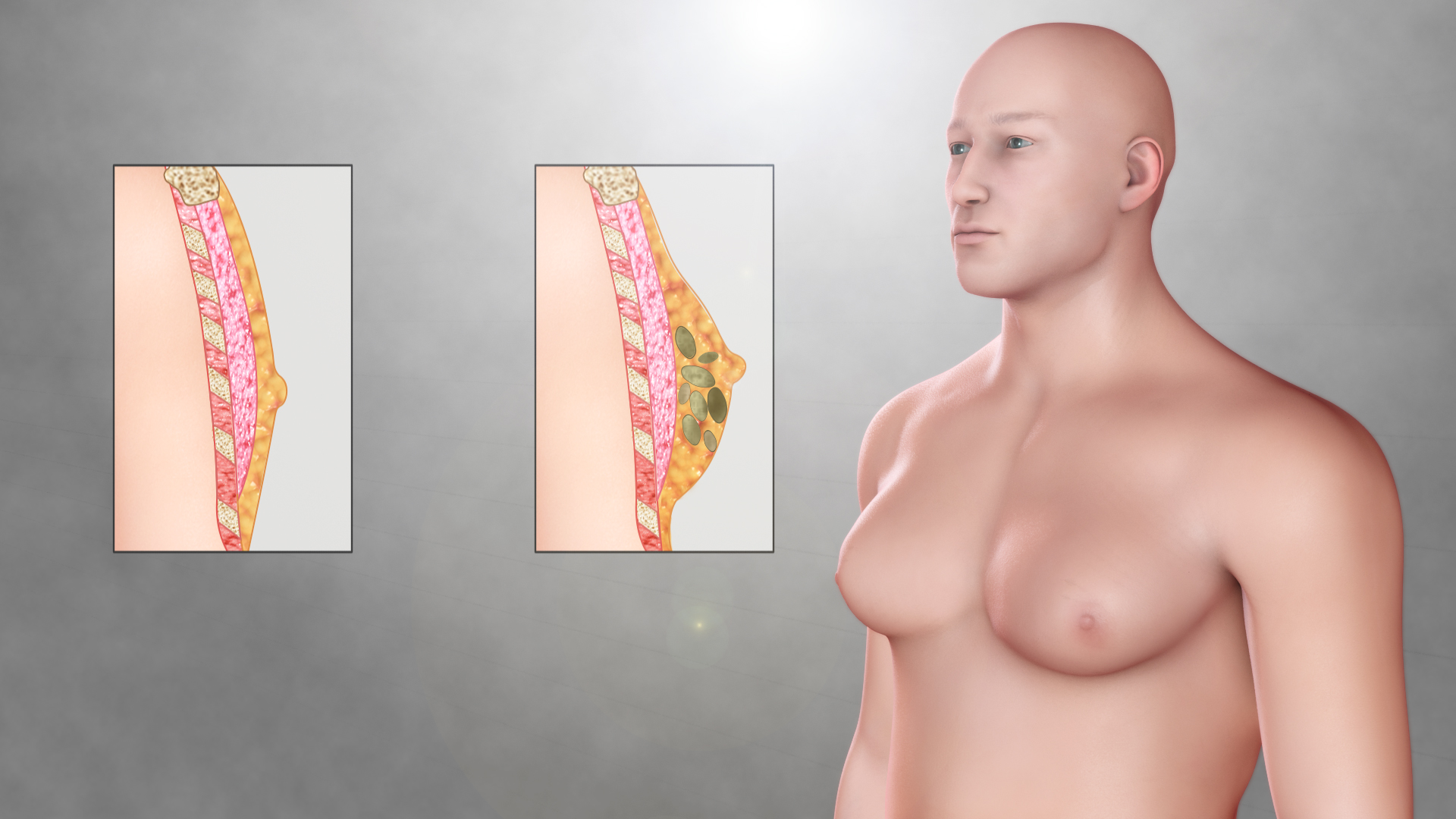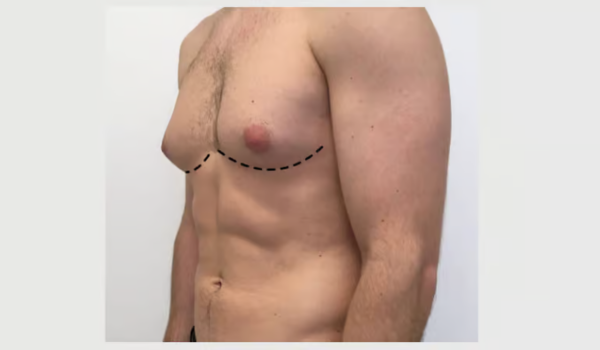Gynecomastia is a condition marked by an increase in male breast tissue due to hormonal imbalances between testosterone and estrogen. It can occur at birth, during adolescence, or later in adulthood. Symptoms may include swelling, tenderness, or the presence of a lump in the breast. The condition may affect one or both breasts and is influenced by puberty, aging, medications, substance use, and health conditions that alter hormones.
Gynecomastia is relatively common, with research estimating that up to 65% of men experience it at some point in their lives. Treatment depends on the cause—sometimes it resolves on its own, while in other cases, addressing underlying conditions or surgery may be necessary.
Types of Gynecomastia
Florid gynecomastia
This early-stage type appears within the first four months. It is characterized by increased ductal tissue and vascularity, or prominent veins.
Intermediate gynecomastia
This stage reflects the progression from florid to fibrous gynecomastia.
Fibrous gynecomastia
Usually occurring after one year, this advanced stage is marked by fewer ducts and more fibrous breast tissue. At this stage, reversal is unlikely, making early diagnosis and treatment important.
Gynecomastia Symptoms
For many, gynecomastia presents with mild symptoms, primarily swelling in one or both breasts. Tenderness and nipple irritation may occur, especially in adolescents.
Seek medical attention if you experience rapid swelling, nipple discharge, or bleeding, as these are not typical signs of gynecomastia and may indicate a more serious issue. Even if symptoms are mild, a healthcare provider should evaluate your condition since gynecomastia may signal underlying health concerns, such as thyroid disease or testicular tumors.
What Causes Gynecomastia?
In some cases, gynecomastia is idiopathic, meaning there is no known cause. Often, it results from hormonal imbalances between estrogen and testosterone.
-
At birth: Caused by elevated estrogen levels before delivery.
-
During adolescence: Linked to fluctuating hormone levels in puberty. Substance use, such as anabolic steroids, alcohol, marijuana, and certain drugs, can also trigger it.
-
In older adults: Often due to age-related decline in testosterone.
Risk Factors
Certain health conditions can raise the risk of gynecomastia, including:
-
Thyroid disease
-
Breast cancer
-
Obesity
-
Hypogonadism (impaired testicular function)
-
Adrenal disease
-
Cirrhosis
-
Kidney failure
-
Tumors affecting hormone production
Medications and supplements
Some drugs may contribute to gynecomastia, such as:
-
Medications for prostate cancer
-
Certain antibiotics
-
Anti-ulcer drugs
-
Chemotherapy and some cancer treatments
-
Heart and blood vessel medications
-
Medicines for anxiety, depression, and psychotic disorders
-
Herbal supplements with phytoestrogens
-
Lotions containing lavender or tea tree oil
How Is Gynecomastia Diagnosed?
Medical history
Your provider will ask about the onset, duration, and nature of breast changes, symptoms like pain or discharge, medication use, and drug or alcohol consumption.
Physical examination
A provider will check for firmness, asymmetry, nipple discharge, and lumps. They will also distinguish between true gynecomastia and pseudo gynecomastia, which is fat accumulation rather than glandular tissue.
Blood tests
These may be ordered to assess hormone levels, liver, and thyroid function.
Mammogram and imaging
A mammogram, ultrasound, or biopsy may be used to rule out breast cancer if lumps are present.
Testicular ultrasound
This can help identify tumors or abnormalities in the testes that may cause gynecomastia.
Treatments for Gynecomastia
For infants and adolescents, gynecomastia often resolves naturally. In some cases, compression garments can help improve appearance and comfort.
Medications
If symptoms persist, a healthcare provider may recommend medications that block estrogen effects, such as tamoxifen or raloxifene, though these are not FDA-approved specifically for gynecomastia.
Surgery
For severe or long-standing cases, breast reduction surgery may be recommended to remove excess tissue, especially in fibrous gynecomastia.
How to Prevent Gynecomastia
Since hormonal changes occur naturally, gynecomastia cannot always be prevented. However, avoiding recreational drugs and managing medication use can reduce risk. If a prescribed drug is suspected of causing gynecomastia, consult your provider about possible alternatives—never stop medication on your own.
Related Conditions
Underlying medical conditions that may contribute include hypogonadism, adrenal disease, thyroid disorders, cirrhosis, and kidney failure. Tumors in glands such as the adrenal, pituitary, lungs, or testes can also cause gynecomastia.
Living With Gynecomastia
Gynecomastia can affect self-esteem and lead to stress or anxiety. If the condition causes emotional distress, talk with a healthcare provider about treatment options and consider working with a mental health professional.
Building a support network of family, friends, or peers with gynecomastia can also help. Online forums, such as Gynecomastia.org, offer spaces to share experiences and advice.





